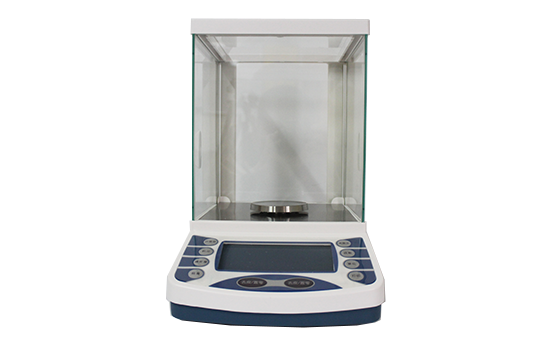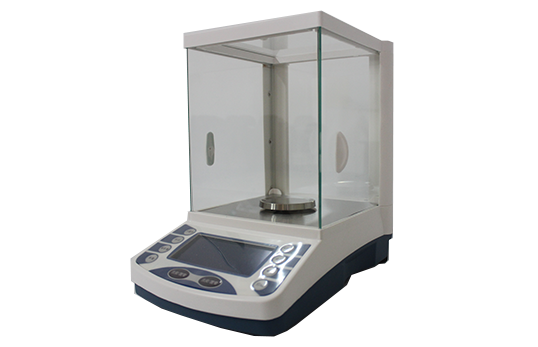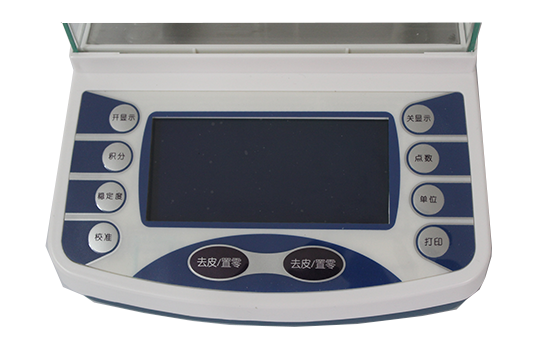2022-03-04
-
1.Principle
A balance that balances the gravity of an object with electromagnetic force is called an electronic balance. Its characteristics are accurate and reliable weighing, fast and clear display, automatic detection system, simple automatic calibration device and overload protection devices.

FA1004C-2004CS series1/10,000 electronic analytical balance
Electronic balances generally use strain sensors, capacitive sensors, and electromagnetic balance sensors. The strain sensor has simple structure and low cost, but its accuracy is limited.
Before 2009, it could not achieve very high precision; capacitive sensors have fast weighing speed and high cost performance, but they cannot achieve very high precision; electronic balances using electromagnetic balance sensors. Its characteristics are accurate and reliable weighing, fast and clear display, automatic detection system, simple automatic calibration device and overload protection devices.
2.Classification

FA1004C-2004CS series
1/10,000 electronic analytical balance1. Ultra-micro electronic balance: The maximum weighing of the ultra-micro balance is 2 to 5g, and its scale division value is less than (maximum) 10-6 of the weighing. For example, Mettler's UMT2 electronic balance is an ultra-micro electronic balance.
2. Micro balance: The weighing of micro balance is generally 3 to 50g, and its division value is less than (maximum) 10-5 of the weighing, such as Mettler's AT21 electronic balance and Sartoruis' S4 electronic balance.
3. Semi-micro balance: The weighing of semi-micro balance is generally 20 to 100g, and its division value is less than (maximum) 10-5 of the weighing. For example, Mettler's AE50 electronic balance and Sartoruis' M25D electronic balance belong to such.
4. Constant electronic balance: The maximum weighing of this type of balance is generally 100 to 200g, and its division value is less than (maximum) 10-5 of the weighing, such as Mettler's AE200 electronic balance and Sartoruis' A120S and A200S electronic balances The average belongs to the constant electronic balance.
5. Analytical balance: In fact, electronic analytical balance is a general term for constant balance, semi-micro balance, micro balance and ultra-micro balance.
6. Precision electronic balance: This type of electronic balance is a general term for electronic balances with an accuracy level of II.
3.Indicators for selecting electronic balances

FA1004C-2004CS series
1/10,000 electronic analytical balance1. Determine the accuracy
When choosing an electronic balance, the absolute accuracy (division value e) of the electronic balance should be considered whether it meets the weighing accuracy requirements. If you choose a balance with an accuracy of 0.1 mg or a balance with an accuracy of 0.01 mg, it is not advisable to generally say that the balance with an accuracy of 1/10,000 or 1/100,000 is required, because some foreign manufacturers use relative accuracy to measure the balance. Therefore, we must consider the accuracy level when purchasing and using electronic balances.
Generally speaking, the accuracy requirements of electronic balances are higher than that of their actual use. For example, the weighing accuracy is 0.001g. It is recommended to buy an electronic balance with 0.000g accuracy when actually purchasing an electronic balance. This will make your own experiments more accurate.
2.determine the range
When choosing an electronic balance, in addition to its accuracy, it should also see whether the maximum weighing meets the needs of the range. Usually, it is enough to take the maximum load and add a little insurance factor, that is, the common load can be relaxed a little bit, not the bigger the better.3. Determine the purpose
It is to use a net hydraulic balance for the study of net hydraulics, some need a mechanical analytical balance, some are a balance for jewelry, and some are an electronic price scale.
4.determine the environment
Whether in a windless indoor or harsh outdoor, in a humid environment or in a space with a lot of suspended matter.




